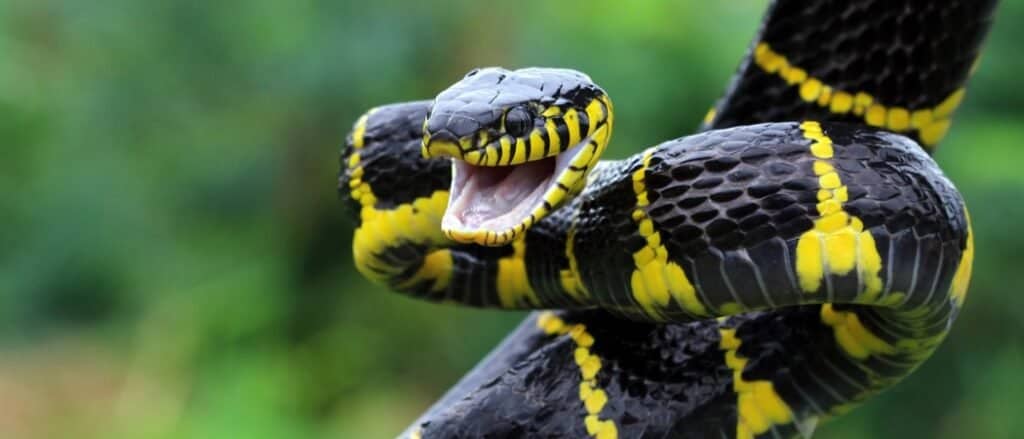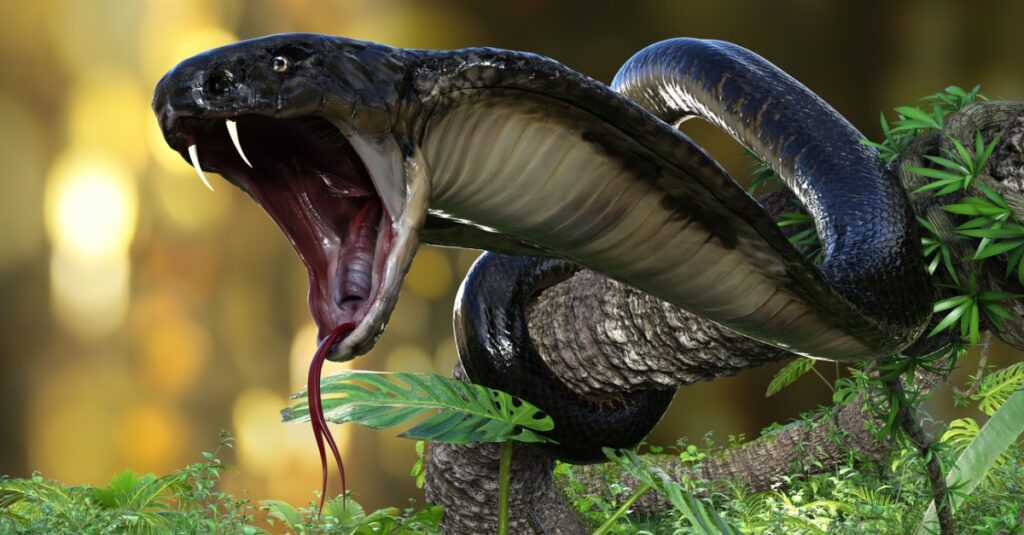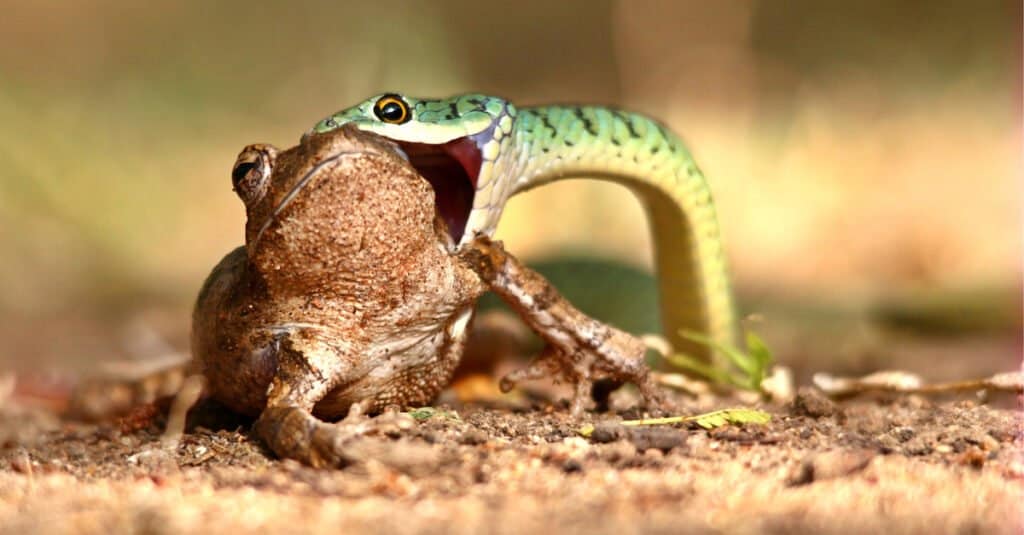
Despite being tragically misunderstood by most people, snakes are fascinating, diverse, and intelligent animals who deserve our respect. There are almost 4,000 unique species of snakes within the Serpentes suborder, with more being discovered all the time.
These strict carnivores use a variety of methods to hunt, capture, and eat their prey, from slowly constricting them to using fast-acting venom or even just swallowing them whole after ambushing them.
Understanding these animals’ diets helps us better understand why they’re so ecologically important. In fact, many species help to control pest populations, such as rats and mice, and snakes, in general, are far less dangerous to humans than what Hollywood and the media would have you believe.
Let’s take a closer look at what snakes eat and their favorite prey!
First, Why Are All Snakes Carnivores?

All snake species are 100% carnivorous
©Kurit afshen/Shutterstock.com
As we briefly touched on earlier, all species of snakes are 100% carnivorous. This means they never eat plant material like leaves or vegetables. To this day, scientists and researchers haven’t been able to find even a single species of snake that eats plants in any amount. There aren’t even any omnivorous snakes that occasionally eat plants.
Snakes’ bodies simply aren’t designed to derive nutrients from plants. This is mostly due to these animals’ very short digestive tracts and the fact that they tend to swallow their prey whole without chewing even once.
Plus, plants just don’t have enough calories to sustain them, even if they were able to digest them properly. A snake’s digestive tract is suited to eating very dense, high-calorie foods like small prey animals, and most snakes only eat once every few weeks or so as their meals slowly break down in their stomachs.
Without the necessary gut bacteria to break down plants or any way to get enough calories out of them, snakes just don’t find plant material worth eating.
So, what foods do snakes eat, then, if plants are off-limits? The answer is lots and lots of protein-rich prey animals (and sometimes their eggs, too)!
What Snakes Eat: 10+ Foods On Their Menu

A
king cobra
striking at prey
©iStock.com/mrjo2405
In general, snakes prefer live prey since they get far more nutrients out of live animals than dead ones. They won’t go after anything that’s already dead and decomposing, though in some cases, they will eat eggs from various animals like birds, fish, and even other snakes and reptiles since eggs are packed with the protein and nutrients they need and are easy targets for them.
Additionally, most species of snakes are fairly small, around 2 to 4 feet in length, so they prefer to pursue prey animals that they can reliably swallow whole without complications.
This means you don’t have to worry about snakes eating humans, as we’re just too much trouble for them to bother with. In reality, snakes eat lots of small-to-medium-sized prey animals, such as:
- Mice and rats
- Various other rodents, like rabbits and chipmunks
- Birds
- Frogs and toads
- Fish
- Invertebrates like earthworms and slugs
- Other snakes, especially babies, and juveniles
- Bats
- Lizards
- Various mammal, bird, and reptile species’ eggs
Amazingly, the largest species of snakes, like anacondas and Burmese pythons, will eat larger animals, like monkeys, deer, and capybaras! There are a few recorded instances of anacondas attacking animals like jaguars and lions, though this is very rare and usually out of desperation, such as if they’re starving or sick.
How Do Snakes Hunt Their Prey?

A snake eating a frog
©Tallies/Shutterstock.com
Snakes are unbelievably fierce predators for having no legs to run with or limbs to grasp with!
They use a variety of methods and tricks to make hunting prey easier for them, such as injecting deadly venom or slowly constricting their prey until the animals start to suffocate and are rendered unconscious. Some snakes will stalk their prey for hours, waiting for the right moment to strike within the blink of an eye.
In addition to these clever mechanisms, snakes have an extremely keen sense of smell. They use their tongues to pick up information about nearby animals to track them for long distances, and research shows that many species such as rattlesnakes are even able to sense nearby animals’ body heat.
They flick their forked tongues out towards the ground as they slither about, in turn transmitting any information they pick up to their Jacobson’s organ (also sometimes simply referred to as a vomeronasal organ), which is located in the roof of their mouth.
This organ helps snakes determine how far away a prey animal is or even what specific type of animal they are! It also can sometimes help snakes determine if a predator is nearby that could spell danger for them.
The photo featured at the top of this post is © Tallies/Shutterstock.com
Discover the "Monster" Snake 5X Bigger than an Anaconda
Every day A-Z Animals sends out some of the most incredible facts in the world from our free newsletter. Want to discover the 10 most beautiful snakes in the world, a "snake island" where you're never more than 3 feet from danger, or a "monster" snake 5X larger than an anaconda? Then sign up right now and you'll start receiving our daily newsletter absolutely free.
Thank you for reading! Have some feedback for us? Contact the AZ Animals editorial team.






